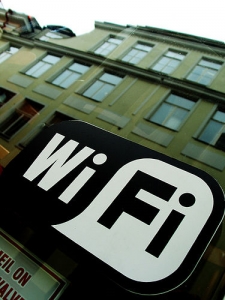 So you’re convinced that you have to secure your WiFi. Good, now we can make some progress. In the previous post, I mentioned using a password. This is the first step is making sure that unauthorized users will not be able to connect easily.
So you’re convinced that you have to secure your WiFi. Good, now we can make some progress. In the previous post, I mentioned using a password. This is the first step is making sure that unauthorized users will not be able to connect easily.
In most cases, people use WEP, or Wired Equivalent Privacy. While this provides a certain level of protection, WEP is relatively easier to crack. If a hacker is persistent enough, WEP will give way quite easily. As such, I suggest using WPA (Wireless Protected Access) or WPA2 instead. Either way, you will need to indicate an encryption key. As with other instances wherein you have to choose a password, choose one that is hard to guess. Long encryption keys that are combinations of letters and numbers are the best kind.
Another thing that you should do is to change the default SSID (Service Set Identifier) name. This is what computers used to detect available wireless networks. Most laptops and mobile phones are set to automatically detect available SSIDs. If you change the default name, and turn of SSID broadcasting, users who want to connect will have to enter the name manually.
Last, you might want to disable DHCP, or Dynamic Host Configuration Protocol. This will require you to assign IP addresses manually. If you can do this, then you will have added security. However, if you think it’s too complicated, you can leave it. The first two tips above will already give you good enough security for everyday purposes.
 I didn’t realize that there are still a lot of people who do not really pay attention to securing their WiFi at home. I guess that I have always taken it for granted that once you set up any connection for home use, you install passwords and other measures to protect it. Apparently, in this day and age, not everyone has the same idea.
I didn’t realize that there are still a lot of people who do not really pay attention to securing their WiFi at home. I guess that I have always taken it for granted that once you set up any connection for home use, you install passwords and other measures to protect it. Apparently, in this day and age, not everyone has the same idea.